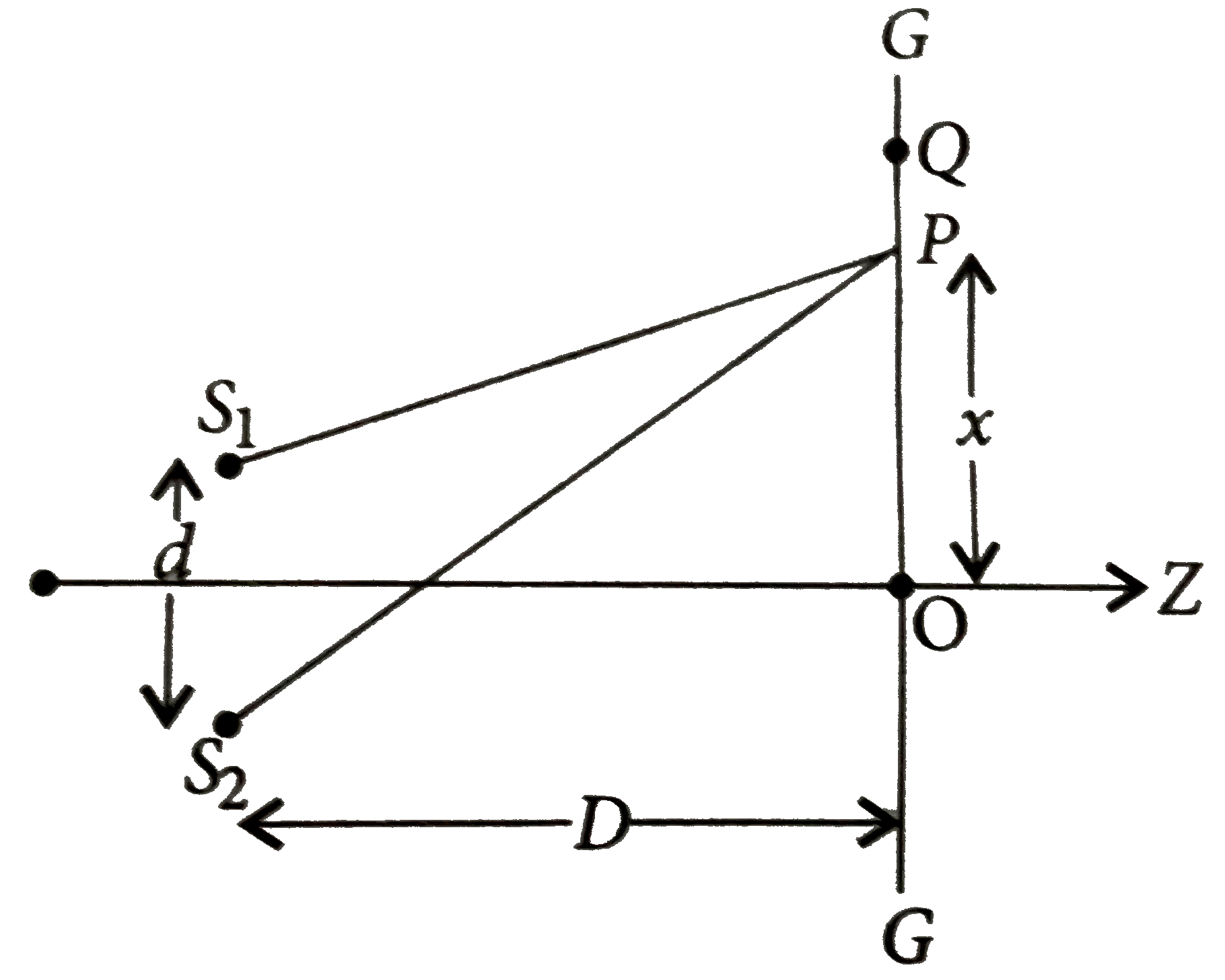Assertion : The fringe closest on either side of the central white fringe in case of interference pattern due to white light is red and the farthest appears blue.
Reason : The interference patterns due to different component colours of white light overlap.
If both assertion and reason are true and reason is the correct explanation of assertion.
If both assertion and reason are true but reason is not the correct explanation of assertion.
If assertion is true but reason is false.
If both assertion and reason are false.
The correct Answer is:B
The interference patterns due to different component colours of white light overlap incoherently.

The central bright fringes for different colours are at the same position. Therefore, the central fringe is white. For a point P for which S2P−S1P=λb2 where λb≅4000Ã…
represents the wavelength for the blue colour, the blue component will be absent and the fringe will appear red in colour. Slightly farther away where S2Q−S1Q=λb=λr2
where λr=8000Ã… is the wavelength for the red colour, the fringe will be predominantly blue. Thus the fringe closest on either side of the central white fringe is red and the farthest will appear blue.
Topper's Solved these Questions
Similar Questions
Knowledge Check
- Question 1 - Select One
The colour of bright fringe nearest central achromatic fringe in the interface pattern with white light will be
AvioletBredCgreenDyellow - Question 2 - Select One
Red and blue light appear different to a human due to different
AspeedBIntensityCamplitudeDfrequency - Question 3 - Select One
In the interference pattern all the fringes are of equal emit light of
AintensityBcontrastCwidthDall of these
In interference pattern, using two coherent sources of light, the fringe width is …… .
View SolutionIn interference of light, β is fringe width. The distance of nth maxima from the centre of interferene pattern is
View SolutionThe intensity of the central fringe obtained in the interference pattern due to two identical slit sources is I. When one of the slits is closed then the intensity at the same point is I0. Then the correct relation between I and I0is :
View SolutionIn YDSE setup when white light is used then which of the following statements are correct for the interference pattern obtained.
View SolutionThe colours seen in the reflected white light from a thin oil film are due to
View Solution

